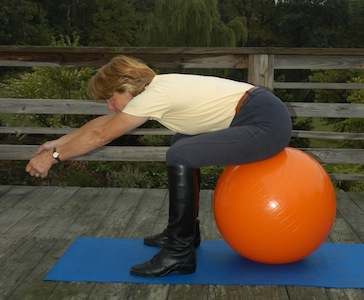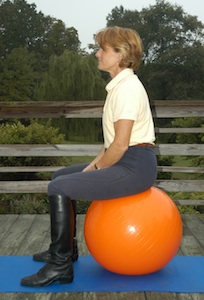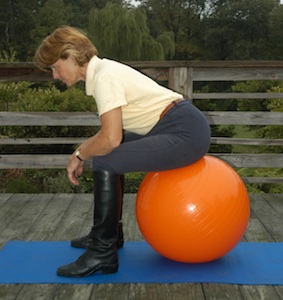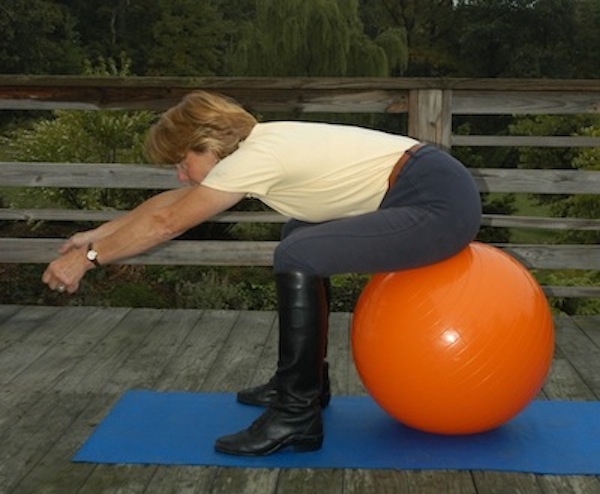Do you use a crest release when you jump? Wonder if you are in balance with your horse? Think you are ready for a more sophisticated type of release over fences? Here’s an exercise to find out if your weight is in the right place for an automatic release.
An automatic release is where you follow the bit with your hands as your horse goes over the fence instead of placing your hands on the horse’s neck. An automatic release gives you more flexibility, ability to turn while over the fence and allows your horse to use his neck freely when he jumps. But in order to ride with an automatic release you must be in balance over your feet!
If you attempt an automatic release without the correct balance you run the risk of hitting your horse in the mouth or interfering with his ability to jump. You could wind up in a heap if your rein contact is too severe at the wrong moment. Therefore an automatic release it not for the person learning to jump but should be the goal for anyone wishing to progress over fences. Otherwise you become dependent on the horse’s neck for your balance and limit both you and your horse’s ability to jump.

Next time you jump notice what you do with your hands. Do you use a crest release? Is it long or short? Do you brace against your stirrups and lean on the neck? Can you go through a grid or jumping chute without your hands on the reins?
Working through a grid or chute without hands is an excellent way to prepare for an automatic release because you must be balanced in your jumping position with your hips back and hips, knees and ankles able to absorb the motion of the horse when riding without reins. Once you have found this position through a grid you are ready to follow your horse’s mouth with your hands because you no longer need them for balance and security. Use this unmounted lesson as preparation for learning to ride with an automatic release over fences.

You will need an appropriately sized ball. Have a right angle (90 degrees) at the back of your knee when sitting with your feet in front about shoulder width apart. Do not try to straddle the ball! This will make it very difficult for you to use your hips correctly. (For more information about using the exercise ball see my Ride Like A Natural® Part 3 DVD, Get on the Equiball.)
Sit in full seat. Fold forward from your hips resting your forearm on your thighs. Check that your back is flat. Put one hand on your belt area to feel if it is flat or have someone push on your lower back. In the correct position you can resist easily. Otherwise your assistant will push you off the ball. Be careful! If you are not sure whether your lower back is correct round and hollow your assistant pushes to feel when you are solid and strong. The push will go through to your feet.
From this position extend your arms forward in front of you. It should be easy to do without discomfort in your shoulders. Return your forearms to your thighs then round or hollow your back. Slowly extend your arms. Feel how your back position changes the ease with which you can extend.

With your arms extended and back flat come up to full seat by opening at the hips. Repeat with your back rounded or hollowed noticing how much heavier your arms feel. When flat you open and close from the hips. When rounded or hollowed your shoulders and upper back have to do the work of holding your arms out.
Use this Murdoch Minute to develop your automatic release off the horse. In the saddle be sure to keep your seat back and fold at the hips with back flat as you extend your arms. Practice over poles and x-rails until you are sure you have your balance without relying on the reins and always remember to enjoy the ride!
(Copyright© 2012. All rights reserved.)




